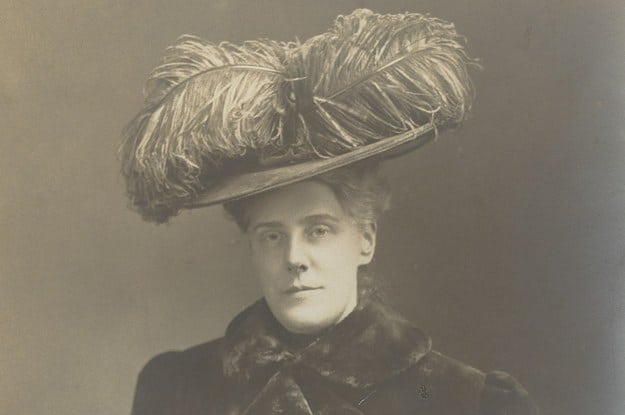Anna Jarvis was forever changed by a simple prayer offered during Sunday School by her mother Ann. Her mother, an activist who organized around maternal and infant public health, stated her hope for “a day…set aside for mothers to rest.” (1) This prayer, a precursor to modern critiques of the second shift and women’s unpaid domestic labor in the home, also offered a solution-radical in both its day and ours, that women rest. Rest, strike, radical self care, abstain from all labor, the notion is radical in a capitalist society that under values women’s work. This call to action was powerful enough that it impacted Anna for the rest of her life. She devoted herself to lobbying for national recognition of her mother’s vision-a day of rest for mother’s. In 1914, she was successful and President Wilson declares Mother’s Day a national holiday. (2)
Almost immediately, the floral and greeting card companies began to coop the holiday, emphasizing the message that children ought to spend money on flowers and cards to appreciate mothers. They inflated prices and made significant money. Anna was horrified, reacting in increasingly public demonstrations. She is reported to have upended a “Mother’s Day salad” at a restaurant and walked out with out paying. She was also reported to have been dragged screaming from a Mother’s Day service by the police. (3) She worked to rescind the holiday the rest of her life, and died in a sanitarium paid for by the greeting card and floral companies. She was quoted in the New York Times obituary as saying “a printed card means nothing except that you are too lazy to write to the woman who’s done more for you than anyone in the world.” (4)
Given this turbulent origin story, a few takeaways.
First, if you feel have ever felt like ranting until the police have to be called to drag you screaming from the building during a Mother’s Day sacrament meeting, know you are in good company and it is how the founder of Mother’s Day spent the holiday.
Secondly, the original vision for the day was to have a day of true rest. This is a radical notion, and may be uncomfortable. But you don’t have to apologize if your day of rest included avoiding church and family, getting a massage or checking out a new hatchet throwing venue. You do you.
Thirdly, the original public health needs that Ann Jarvis was addressing in her work is still vitally needed. Infant and maternal mortality in the United States is hugely problematic, and is increased by violence against women and significantly higher for black women. The holiday can be a reminder to support organizations working towards those original goals.
Lastly, grassroots activism is the core of the holiday. Women during pregnancy, childbirth and postpartum are a highly vulnerable population. This vulnerability is increased by dealing with additional burdens. Some areas of activism to consider this Mother’s Day may include:
Incarcerated mothers
Families separated at the US border
Homeless mothers, mothers experiencing domestic violence
Mothers organizations working to end gun violence, police brutality
Nursing and lactation advocacy groups
Paid family leave, universal quality childcare, WIC, lunch debt reduction
Family Acceptance project and helping families support LGBT children
What others would you include?
1. Martin, M (Host). (2014, May 8). “Take A Second To Salute Anna Jarvis, The Mother Of Mother’s Day.” All Things Considered, Radio broadcast episode.
2. History.com Updated May 10, 2019.
3. Mulinix, J. “Why Mothers Day Founder Anna Jarvis later fought to have the holiday abolished.” 2019, May 7. Mental floss.
4. Martin, M (Host). (2014, May 8). “Take A Second To Salute Anna Jarvis, The Mother Of Mother’s Day.” All Things Considered, Radio broadcast episode.
Ariel is a thirty something mother of two who enjoys social work, libraries, and making tamales.







5 Responses
I have worked as a clinical research assistant studying maternal choice and childbirth technologies. My thoughts are that national health registries are fantastic tools for evaluating the efficacy and usage of medical interventions. I’m in the US, and we don’t have one. There must be a balance between patient centered care and evidence based care. We want to work with what evidence we have, but we should treat patients individually. I suppose that means we lack enough evidence to make full recommendations. Support science. That is an area which the US excels. The effort of the US government to fund and develop science and distribute the findings benefits the entire world. Support noble efforts. We should encourage women to be engaged in their pregnancies and births, to recognize their wishes and to help them work through their fears. Our current process of informed consent is a rather ridiculous. People hear 8% chance of x, but that isn’t how people think about risk. 8% is not useful in that way.
My personal experience with birth two years ago had tinges of Anna. I refused to do a medical procedure that is unfortunately used quite universally in US hospitals. I didn’t want it because I thought it could be a risk for y even though there is scant evidence for it. I knew my argument would be received as ludicrous and so I didn’t breathe it. Instead I ranted and raved and provided another reason that also wasn’t good but was easier to rant and rave about. Because of my force, I successfully avoided the procedure. And as the course of labor showed, I didn’t need it. I have no regrets except knowing the entire floor thought I was off my rocker.
Thank you for this history! I absolutely loved your first takeaway. What a sad story–I had never heard of Anna Jarvis before.
Bravo!
It has long been my personal policy to avoid church meetings on Mother’s Day. I stayed home and have enjoyed a wonderful day. Plan to do the same next year.